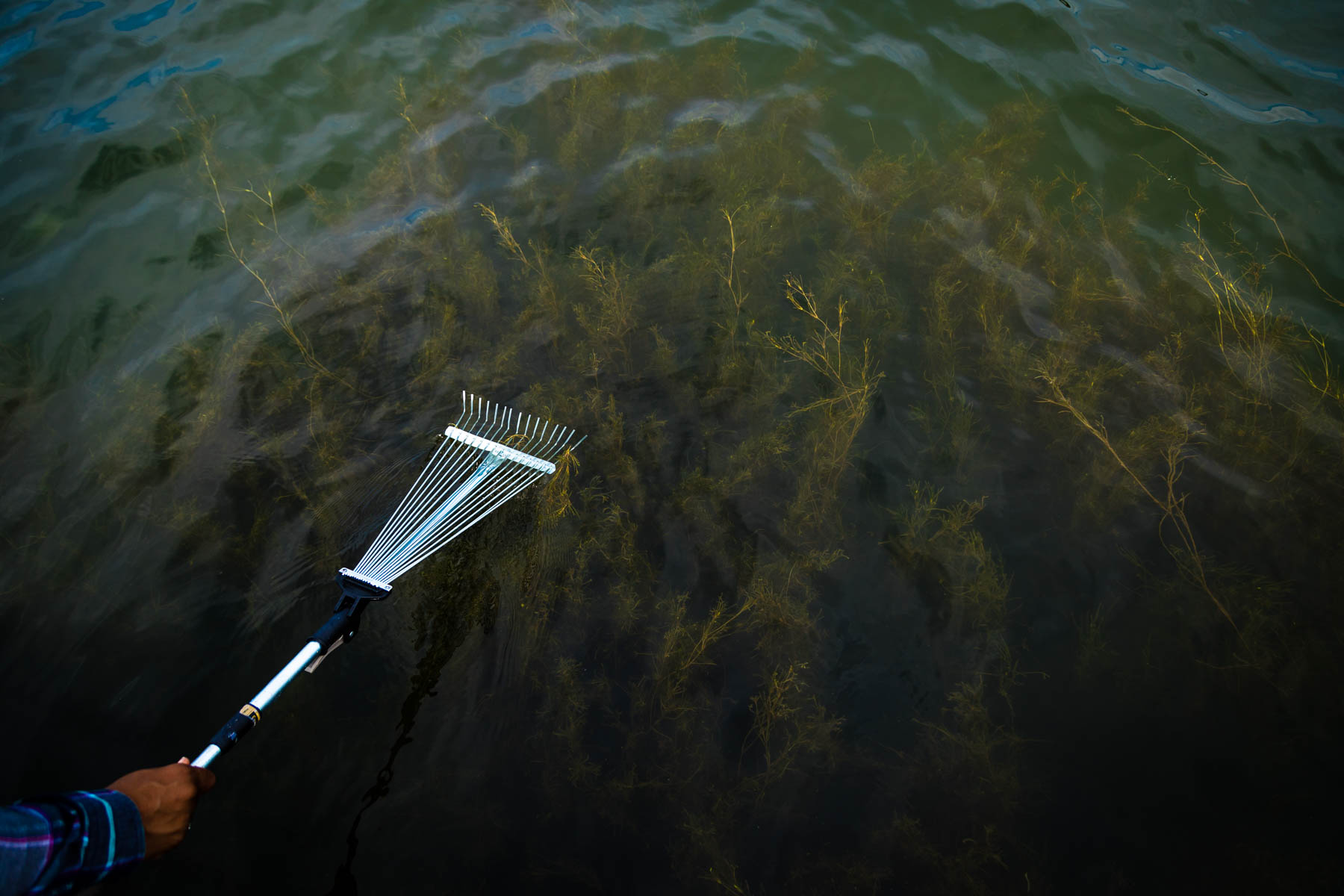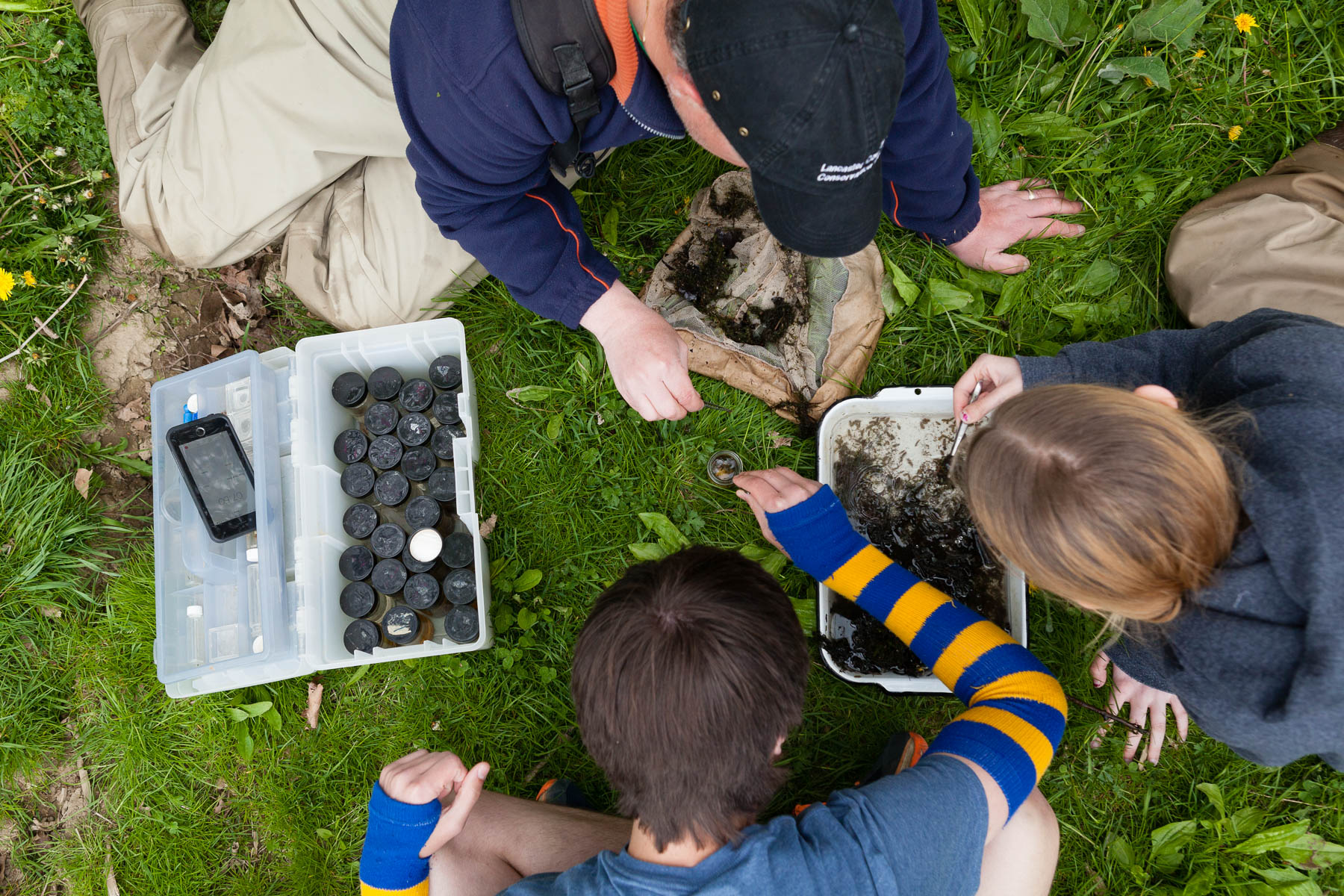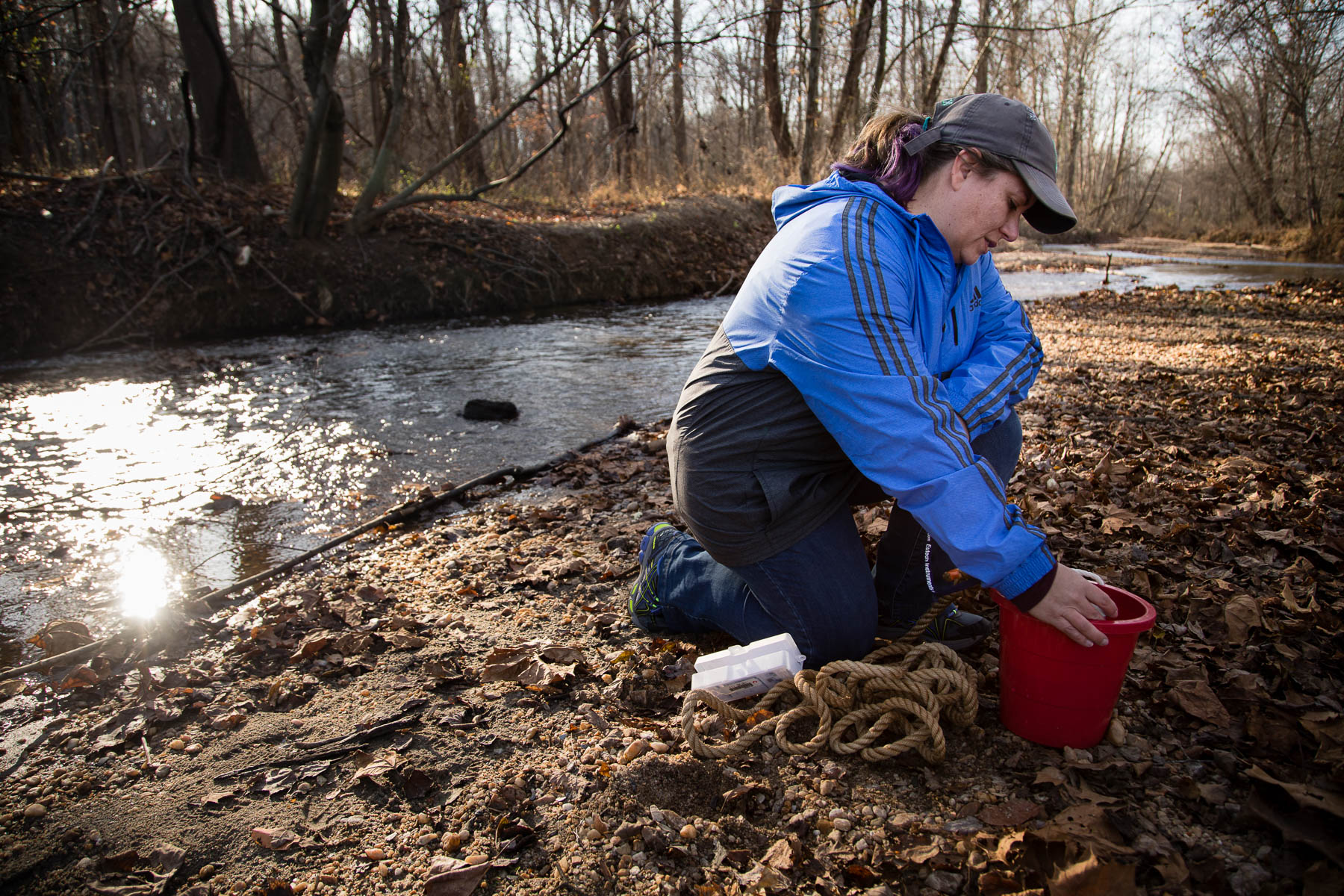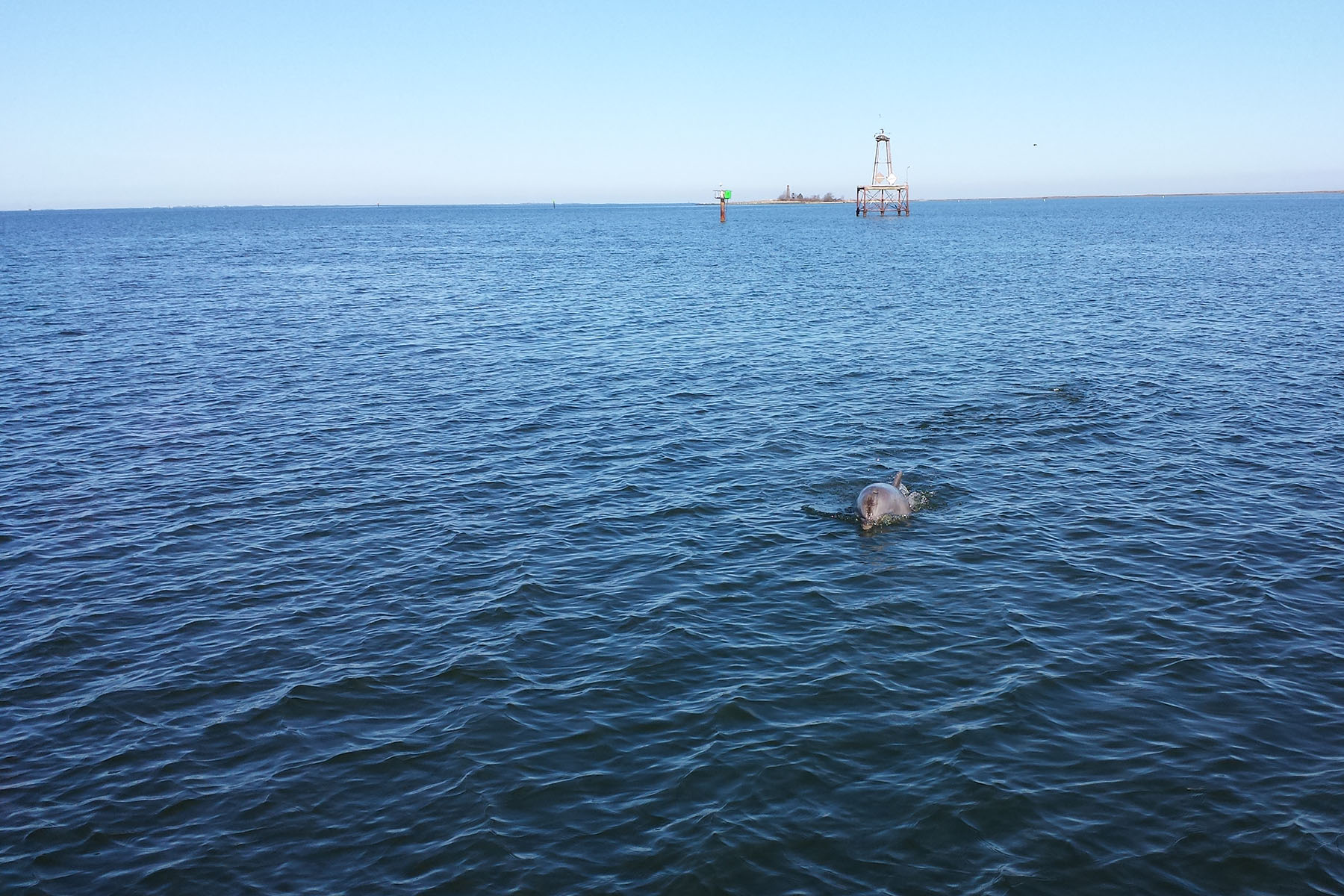Image

From counting underwater critters to identifying birds in the sky, there are plenty of ways to be an everyday scientist
BY JOAN SMEDINGHOFF, chesapeakebay.net
 Marcia Watson, right, and Gene Scarpulla of Bowie, Md., spot birds along the shore at a private residence in Tracys Landing, Md., during the National Audubon Society’s 117th annual Christmas Bird Count on Dec. 18, (Photo by Will Parson/Chesapeake Bay Program)
Marcia Watson, right, and Gene Scarpulla of Bowie, Md., spot birds along the shore at a private residence in Tracys Landing, Md., during the National Audubon Society’s 117th annual Christmas Bird Count on Dec. 18, (Photo by Will Parson/Chesapeake Bay Program)There are plenty of ways that your everyday observations can be put toward a larger body of knowledge. It can be as easy as downloading an app and noting when you see a certain kind of bird, or more elaborate, like choosing a few days each month to collect water samples from your local stream. No matter what you choose to do, you can be a scientist.
For birdwatchers (or birdwatchers in the making), there are many different apps available to help you identify and record birds that you see. One app, eBird, allows you to keep track of the birds you see when you are birding. By entering when, where and how you go birding, as well as the birds you see, eBird keeps track of what birds you personally see, while contributing the abundance and seasonal data to all of its users. Another app, iNaturalist, works similarly to eBird but allows you to record almost any species, including mammals, reptiles, amphibians, insects and plants.
If you need a little motivation to get started, why not join a larger effort? Every December, the National Audubon Society hosts the Christmas Bird Count. They’ve held it every year since 1900, meaning you’d not only be helping Audubon researchers better understand birds, but you’d be contributing to one of the oldest citizen science project in the country. If you find you love it, the next event you can join in the Great Backyard Bird Count in February.

Chesapeake Conservation Corps intern Keitasha Royal surveys underwater grasses near the mouth of the Tred Avon river in Talbot County, Md., on July 17, 2017. The outing was part of efforts to survey types and amounts of submerged aquatic vegetation (SAV) throughout the shallow waters of the Chesapeake Bay and its tributaries. (Photo by Skyler Ballard/ Chesapeake Bay Program)
Since 1984, an annual aerial survey has collected images of underwater grasses from above, but even the best cameras can’t determine the particular species or health of the grasses identified. That’s where citizen scientists come in. Volunteers are able to use kayaks and canoes to monitor the location, health and species of underwater grasses.
Want to take part? Funding by the Chesapeake Bay Program recently allowed Chesapeake Commons to expand its Water Reporter app. This allows anyone with a smartphone to report when they see underwater grasses by downloading the app, joining the Chesapeake SAV Watchers group and uploading information whenever they are on the water.

Chemistry students from Warwick High School survey macroinvertebrates in Lititz Run in Lancaster County, Pa., during a biannual field trip that visited eight sites along the stream, which has been listed as impaired by the Pennsylvania Department of Environmental Protection. (Photos by Will Parson/Chesapeake Bay Program)
Benthic organisms—which include bottom-dwelling critters such as worms and aquatic bugs—are a great way to determine the health of a stream. There are some that can handle high levels of pollution, while others require pristine waters, so identifying and counting the number of benthic organisms is a quick and easy way to get a snapshot of stream health.
Collecting samples and identifying tiny critters can be fun for scientists of all ages, so look for a group near you that has a benthic or macroinvertebrate sampling program.

Andrea Black conducts water quality monitoring at Austin Run, which flows into Aquia Creek in Stafford County, Va., on Dec. 3, 2016. Green Aquia focuses on promoting a low environmental footprint through activities such as the monthly monitoring, creek cleanups and a community garden. (Photo by Will Parson/Chesapeake Bay Program)
Put the “science” in “citizen science” by participating in water quality monitoring. This is a great way to get to know your local stream, and can be as simple as recording temperature or stream height, or more complicated—like testing for E. coli.
If your group is looking for assistance in creating or strengthening a water monitoring program, check out the Chesapeake Monitoring Cooperative (CMC). The CMC provides support integrating volunteer water quality data into the Chesapeake Bay Program partnership, and it provides many services to volunteer groups.

The crew from the U.S. Army Corps of Engineers, Baltimore District spot dolphins as they survey the Crisfield Harbor Channel on April 15, 2015. (Photo by Brian Retz, U.S. Army Corps Of Engineers/Flickr)
Bottlenose dolphins are frequent visitors to the lower and middle Chesapeake Bay in summer, but there are still plenty of questions about how many come, where they go and how long they stay. The Dolphin Watch team at the Chesapeake Biological Laboratory is looking to answer these questions, and is enlisting your help. Through Chesapeake Dolphin Watch, you can record when, where you see dolphins and how many. Sightings are plotted on a map, and you can see where else dolphins have been spotted in and around the Bay.
About the author

Joan Smedinghoff
jsmedinghoff@chesapeakebay.net
Joan is the Web Content Specialist at the Chesapeake Bay Program. Originally from Chicago, she was introduced to the Chesapeake Bay region through the streams of central Pennsylvania. She received her Bachelor's in Environmental Studies from Dickinson College in Carlisle, Pa., where she first discovered her passion for storytelling.